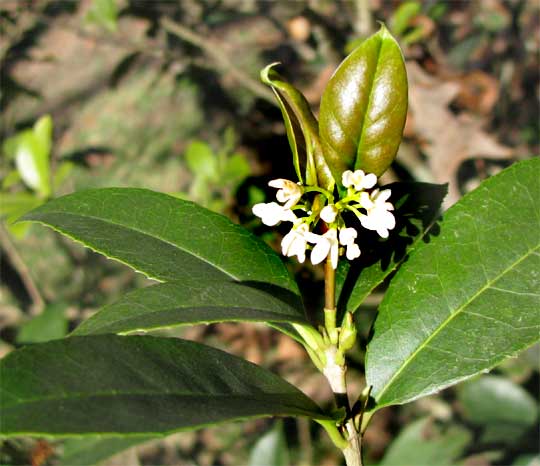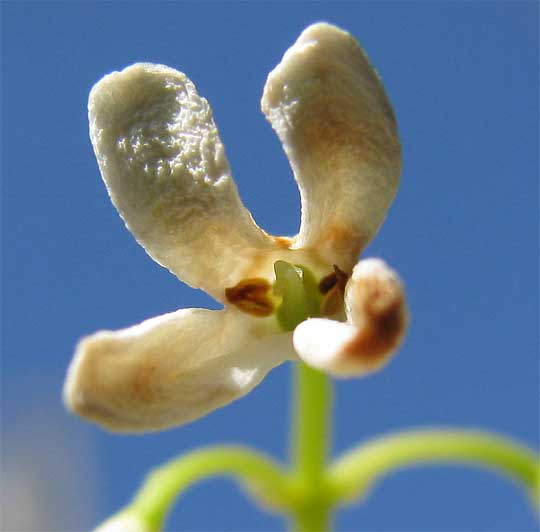Excerpts from Jim Conrad's
Naturalist Newsletter
from the February 9, 2009 Newsletter, issued from the forest near Natchez, Mississippi; elevation ~400ft (120m), ~N31.47°, ~W91.29°:
SWEET OLIVE FLOWERING
Around Karen's house the most conspicuously flowering horticultural plant is the small tree the Sweet Olive, sometimes called Fragrant Olive, Tea Olive, Sweet Osmanthus and other names. It's OSMANTHUS FRAGRANS, a member of the Olive Family, the Oleaceae. You can see its flowers and evergreen leaves -- two new leaves just emerging -- below:

Below, you see a close-up of a single pea-size flower showing features typical of the Olive Family: The corolla with four lobes (those in the picture turning brown in spots, apparently from frostbite), and; just two stamens.

The brown, somewhat V-shaped items are the stamens' anthers. Each anther consists of two pollen- discharging "bags," or locules, separated by a broad- based connective.
The wonderful thing about getting close enough to take the last picture is that Sweet Olive flowers are as intensely, sweetly fragrant as any flower I know. I can't imagine blossoms being perfumier. In fact, lately I've been participating in the ancient Chinese practice of adding Sweet Olive flowers to my morning teas, creating the deliciously scented tea the Chinese call guì hua chá, meaning "cinnamon flower" or "cassia flower." The Chinese also make scented jams and sweetcakes with the blossoms.
It makes sense that the Chinese would know all these nifty uses for Sweet Olive because the species originally is from China's Himalaya region and Japan.
In the US Southeast, the Deep South, we have a "Wild Sweet Olive," also called Devilwood, Osmanthus americanus, which looks a lot like Sweet Olive. However, O. americanus's corolla lobes are much shorter and wider than those of the Sweet Olive.